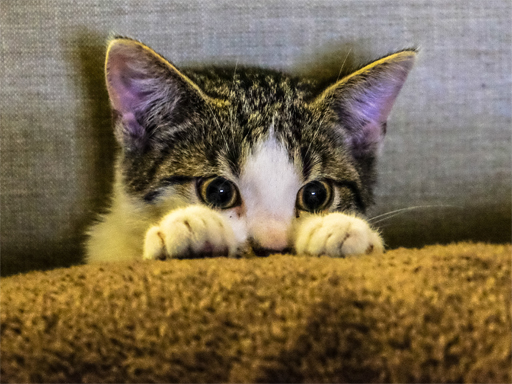Animal Disease Transmission to Humans
As long as we are in the immediate environment of animals or untreated animal products, we are at risk of contracting a disease or infection that can be traced to them.
If you have ever been concerned about contracting a disease or infection from your pet or livestock? What follows is meant to clear up common misconceptions.
Animal diseases that are naturally communicable to humans are called zoonotic diseases or zoonoses.
Sources of Zoonotic Diseases:
During the Bubonic plague some of the people who contracted the disease had been bitten by rats, but most did not receive a rat bite. Instead most people who came down with the disease had been bitten by fleas. Having first bitten infected rats the fleas later bit humans passing to them the deadly plague bacteria.
A wide range of health problems may be linked to animals.
Some common sources of disease causing organisms or infection include:
- Eating contaminated milk or meat
- Eating foods such as fruits, vegetables and other produce particularly mushrooms that are contaminated with animal waste
- Direct contact with a living animal that causes you an injury or transfers a bacterium, virus, fungus or parasite to you
- Handling contaminated materials such as soil and water that have come in contact with animals or animal waste
- Working with soil with unprotected hands or young children who like playing in soil, it’s possible to contact bacteria or parasitic worms from animal waste that could result in disease
How Humans Contract Zoonotic Diseases:
Openings:
- Eyes
- Nose
- Ears
- Mouth
- Cuts and scrapes
serve as easy points of entry for viruses, bacteria and parasites.
This means that:
- Air
- Water
- Food
- Soil
- Direct contact with an infected animal
- Cuts and scrapes to the skin may provide entry points as well.
All play a part in assisting disease causing organisms or infectious agents to enter your body.
The Usual Suspects

Pets are most likely to transmit an external parasite such as a tick directly. Viruses and bacteria are transmitted through nasal droplets and feces. They may also pass internal parasites such as roundworms through their feces. Many living human cells are potential targets for viruses. Once in the human body, bacteria commonly act to cause disease through their secretions or the toxins they produce.
Another common example of a bacterium that can be transferred to humans from mammals is the Toxoplasma gondii bacterium associated with cat feces. You therefore need to be concerned about uncovered sand boxes. Infants, pregnant women and humans who have immune deficiencies are most at risk in contracting toxoplasmosis.
Sometimes a disease causing agent in an animal is disease causing in humans as well. Diseased cattle and swine have had to be destroyed because eating the meat, even when cooked, would have meant the disease causing agent would infect white blood cells in humans.
Sheep, mink, mule deer and elk have also been implicated in the transfer of a disease causing agent. In the United States for example it is possible to contract a form of the modern day plague directly or indirectly from squirrels and prairie dogs.
Remember: An animal may exhibit no symptoms or evidence of disease.
If it does harbor a parasite, virus or bacteria that could cause a problem for humans, the animal may appear completely healthy.
Therefore all individuals who associate with pets and livestock can minimize the impact on humans by helping to maintain animal health.
Preventing Zoonosis
There are no guarantees that an individual will or will not contract a disease or become infected but avoiding certain behaviors and practices will help minimize the risk. Equally important are the proactive behaviors of good hygiene such as hand washing with soap and water following the handling of pets and "cleaning" foods such as vegetables and fruits with clean water that aid in the removal of contamination.
Many common practices can help minimize the transfer of harmful bacteria, viruses and parasites to humans and human food.
These include:
- Feeding pets commercial feed.
- Carefully disposing of all pet waste.
- Preventing cross contamination from raw to cooked food through surfaces such as cutting boards, knives, utensils and human hands.
- Cooking meat thoroughly.
Particular care should be exercised by anyone handling dead animals, such as hunters and meat cutters, especially for parts of animals destined for human food consumption. Scrupulous hand washing and knife and saw sanitation are a must.
With the widespread use of animal waste (manure) being used as fertilizer, those who are in the business of preparing manure for commercial and home use have a particular responsibility to ensure proper storage and treatment of animal waste. Because the waste contains eggs and larva of parasites, it is important that sufficient time and heat be given during storage of the manure to kill the eggs and larvae.
Community drinking water supplies are especially vulnerable to E. coli. Despite the chemical treatment of water, some people have chosen to install distillation and reverse osmosis systems in their homes that will remove harmful microorganisms. Some large supermarkets use these systems on site to produce bottled water.
Contact your veterinarian’s office about human diseases associated with a given animal and ways you can minimize the chances of contracting those diseases.
Adapted from Source: Lockie Gary, Hardee County Extension Director/Livestock Agent


